Key Takeaways
1. Speed reading is a learnable skill that enhances comprehension and efficiency
"By reading this book and using the information daily, you will learn all you need to know about how to read faster and improve your comprehension."
Speed reading benefits. Learning to read faster can significantly improve your personal and professional life. By increasing your reading speed, you can:
- Read more in less time
- Improve concentration and focus
- Understand material with greater depth and accuracy
- Retain information better
- Enjoy reading more
Overcoming misconceptions. Many people believe that speed reading sacrifices comprehension, but this is a myth. With proper techniques and practice, you can actually enhance your understanding while increasing your reading speed. The key is to approach reading as a skill that can be developed and refined, rather than a fixed ability.
2. Overcome passive reading habits to become an active, engaged reader
"Ineffective habits are generally characterized by passive behaviors, while effective ones require active behaviors."
Common passive habits. Three main passive reading habits that slow you down and hinder comprehension:
- Mind wandering (daydreaming)
- Regression (re-reading)
- Subvocalization (mentally pronouncing each word)
Becoming an active reader. To overcome these habits, practice active reading techniques:
- Set a clear purpose for your reading
- Ask questions about the content as you read
- Make connections to your existing knowledge
- Summarize key points in your own words
- Use physical tools like a finger or card to guide your eyes
By consciously engaging with the text, you'll naturally reduce passive habits and improve both speed and comprehension.
3. Expand your eye span and reduce subvocalization for faster reading
"If you want to learn how to read faster, you need to see more each time your eyes stop, widening your eye span."
Expanding eye span. Your eyes make a series of stops and jumps when reading. By training your eyes to take in more words at each stop, you can significantly increase your reading speed. Techniques to practice:
- Reading key words: Focus on longer, more meaningful words
- Reading thought groups: Grasp entire phrases or ideas at once
- Using peripheral vision exercises
Reducing subvocalization. The habit of mentally pronouncing each word as you read significantly slows you down. To reduce subvocalization:
- Push yourself to read faster than you can "say" the words
- Use a physical pacer (finger or card) to move your eyes more quickly
- Practice "hushing" your inner voice by humming or counting while reading
With consistent practice, these techniques will become more natural and effortless, allowing you to process information more quickly and efficiently.
4. Use pre-viewing techniques to quickly grasp the main ideas of any text
"Pre-viewing is a conscious, specific technique of looking over a piece of reading material before actually reading it."
Benefits of pre-viewing. Pre-viewing allows you to:
- Decide whether the reading is worth your time
- Establish a more specific purpose for reading
- Gain valuable background knowledge that helps you read more efficiently
Pre-viewing roadmap. When pre-viewing a text, look for these key elements:
- Title and subtitles
- Introduction and conclusion
- First sentence of each paragraph
- Headings and subheadings
- Illustrations, charts, and graphs
- Bold or italicized text
- Bulleted lists or numbered points
By spending just a few minutes pre-viewing, you can significantly improve your comprehension and reading speed when you dive into the full text. This technique is particularly useful for non-fiction material and can help you quickly determine which parts of a text are most relevant to your needs.
5. Develop critical reading skills to evaluate and retain information effectively
"Being critical means consciously passing judgment, both favorable and unfavorable, on everything you see, hear and read."
Critical reading approach. To become a critical reader:
- Challenge the author's assumptions and arguments
- Distinguish between facts and opinions
- Make inferences based on evidence presented
- Connect new information to your existing knowledge
- Evaluate the relevance and reliability of sources
Engaging with the text. Practice active engagement by:
- Asking questions about the author's motives and background
- Considering the intended audience and purpose of the writing
- Reflecting on how the information relates to your own experiences and knowledge
- Making notes or highlighting key points (but avoid over-highlighting)
By developing these critical reading skills, you'll not only improve your comprehension but also retain information more effectively. This approach transforms reading from a passive activity into an active dialogue with the author, enhancing both your understanding and your ability to apply what you've read.
6. Improve concentration and create an optimal reading environment
"Concentration is the art of being focused, the ability to pay attention."
Concentration enhancers. To improve your focus while reading:
- Choose a quiet, well-lit space for reading
- Remove potential distractions (e.g., turn off notifications on devices)
- Set specific time goals for your reading sessions
- Take short breaks every 20-30 minutes to maintain alertness
- Practice mindfulness techniques to bring your attention back when it wanders
Optimal reading environment. Create a conducive atmosphere for efficient reading:
- Use a comfortable chair and desk, rather than reading in bed
- Ensure proper lighting to reduce eye strain
- Keep necessary tools (e.g., highlighters, note-taking materials) within reach
- Consider using background music without lyrics to mask distracting noises
- Adjust room temperature for comfort
By consciously managing your environment and practicing concentration techniques, you can significantly enhance your reading efficiency and enjoyment. Remember that concentration is a skill that improves with practice, so be patient and persistent in your efforts.
7. Manage your reading workload by prioritizing and triaging effectively
"To start, do you know what's actually in your pile? Where does it all come from? You need to know what you have before you know what you can get rid of."
Triaging your reading pile. Prioritize your reading material using these strategies:
- Unsubscribe from unnecessary newsletters and mailing lists
- Pre-view everything to quickly assess relevance and importance
- Categorize materials into "must-read," "maybe-read," and "can-discard" piles
- Set realistic time frames for addressing each category
- Use speed reading techniques to quickly process lower-priority items
Efficient reading habits. Develop routines to manage your ongoing reading workload:
- Schedule regular "reading time" in your calendar
- Use waiting time (e.g., commutes, appointments) for quick reads
- Create a system for organizing and storing important information from your reading
- Regularly reassess your subscriptions and reading sources to ensure relevance
By implementing these strategies, you can transform overwhelming piles of reading material into manageable, prioritized tasks. This approach not only reduces stress but also ensures that you're focusing your time and energy on the most valuable and relevant information for your personal and professional growth.
Last updated:
FAQ
What's "10 Days to Faster Reading" about?
- Purpose of the book: "10 Days to Faster Reading" by Abby Marks Beale and The Princeton Language Institute is designed to help readers improve their reading speed and comprehension.
- Target audience: It is aimed at busy professionals, students, educators, and anyone looking to manage their reading workload more efficiently.
- Structure: The book is structured as a 10-day program, with each day focusing on different techniques and strategies to enhance reading skills.
- Outcome: By the end of the program, readers should be able to read faster, understand more, and retain information better.
Why should I read "10 Days to Faster Reading"?
- Efficiency in reading: The book offers practical strategies to help you read more in less time, which is beneficial for managing large volumes of reading material.
- Improved comprehension: It not only focuses on speed but also on understanding and retaining information, making your reading more effective.
- Confidence boost: By improving your reading skills, you can gain confidence in your ability to handle complex texts and large reading assignments.
- Versatile application: The techniques can be applied to various types of reading materials, including books, magazines, newspapers, and digital content.
What are the key takeaways of "10 Days to Faster Reading"?
- Reading strategies: The book introduces various strategies like pre-viewing, skimming, and using pacers to enhance reading speed and comprehension.
- Active reading: It emphasizes the importance of being an active reader, engaging with the text, and questioning the author's intent.
- Time management: The book provides tips on managing your reading time effectively, including finding time nuggets and reducing reading pileups.
- Personalization: Readers are encouraged to experiment with different techniques and adapt them to their personal reading style and needs.
How does "10 Days to Faster Reading" suggest improving reading speed?
- Key words and phrases: Focus on reading key words and phrases instead of every word to increase speed without losing comprehension.
- Use of pacers: Techniques like the white card method and finger pacers help guide your eyes and maintain a steady reading pace.
- Pre-viewing: Skim the material first to get an overview and identify important sections, which helps in reading more efficiently.
- Practice and tracking: Regular practice with time trials and tracking progress helps in gradually increasing reading speed.
What is the pre-viewing technique in "10 Days to Faster Reading"?
- Purpose: Pre-viewing is a technique to quickly gather background knowledge and understand the structure of a text before reading it in detail.
- Process: It involves looking at titles, subheadings, introductory and concluding paragraphs, and any highlighted or bolded text.
- Benefits: This technique helps in deciding what to read in detail, what to skim, and what to skip, saving time and improving focus.
- Application: It can be applied to any nonfiction material, including articles, textbooks, and reports.
How does "10 Days to Faster Reading" address comprehension?
- Active engagement: The book encourages readers to actively engage with the text by questioning the author's intent and making inferences.
- Mindful reading: It suggests being aware of your reading purpose and adjusting your speed and focus accordingly.
- Background knowledge: Building background knowledge through pre-viewing and re-viewing helps in better understanding and retention.
- Types of comprehension: The book explains different levels of comprehension—literal, interpretive, and applied—and how to achieve them.
What are some specific methods from "10 Days to Faster Reading"?
- Key words and phrases: Focus on the most important words in a sentence to grasp the main idea quickly.
- Pacer techniques: Use tools like a pen or finger to guide your reading and maintain a consistent pace.
- Skimming and scanning: Learn to skim for main ideas and scan for specific information to read more efficiently.
- Time trials: Regular timed reading exercises help track progress and improve speed and comprehension over time.
How does "10 Days to Faster Reading" suggest managing reading time?
- Time nuggets: Identify small pockets of time throughout the day to fit in reading sessions.
- Reading environment: Create a distraction-free environment to improve focus and efficiency.
- Prioritization: Use techniques like pre-viewing to prioritize reading material and decide what to read in detail.
- Daily practice: Incorporate reading into your daily routine to build and maintain speed and comprehension skills.
What are the best quotes from "10 Days to Faster Reading" and what do they mean?
- "The road to knowledge begins with the turn of a page." This quote emphasizes the importance of reading as a gateway to learning and understanding.
- "Your past is not predictive of your future." It encourages readers to believe in their ability to improve their reading skills, regardless of past experiences.
- "Reading is crucial to success in your field." This highlights the role of reading in professional development and staying informed in one's industry.
- "The universe has a plan for you. Just look for the signs." This suggests being open to opportunities and learning experiences that come through reading.
How does "10 Days to Faster Reading" help with technical reading?
- Building background knowledge: The book suggests pre-viewing and re-viewing to familiarize yourself with technical terms and concepts.
- Vocabulary development: It encourages learning prefixes, roots, and suffixes to understand and remember technical vocabulary.
- Active reading strategies: Use key words, phrases, and pacers to navigate complex texts more efficiently.
- Application of knowledge: Focus on understanding and applying the information rather than memorizing it.
How can "10 Days to Faster Reading" be applied to digital content?
- Screen reading tips: The book provides strategies for reading on screens, such as adjusting font size and using key words and phrases.
- E-mail management: It suggests pre-viewing e-mails and using subject lines to prioritize and manage digital communication.
- Web foraging: Learn to scan and skim web pages for relevant information without getting overwhelmed by the volume of content.
- Reducing printing: Encourages reading on-screen to save time and reduce paper usage.
What is the role of attitude in "10 Days to Faster Reading"?
- Positive mindset: The book emphasizes the importance of a positive attitude towards reading and self-improvement.
- Self-assessment: Regularly evaluate your reading attitude and progress to stay motivated and focused.
- Confidence building: As you improve your reading skills, your confidence in handling complex texts and large volumes of material will grow.
- Continuous improvement: Adopt a growth mindset, understanding that reading skills can always be refined and enhanced.
Review Summary
10 Days to Faster Reading receives mixed reviews. Some readers find it helpful for improving reading speed and comprehension, praising its practical tips and exercises. Others criticize its repetitiveness and reliance on props and metaphors. Many appreciate the book's emphasis on selective reading and adjusting speed based on content. Some readers report significant improvements in their reading speed, while others find the techniques less effective. The book is generally considered more useful for slow readers or those new to speed reading techniques.
Similar Books

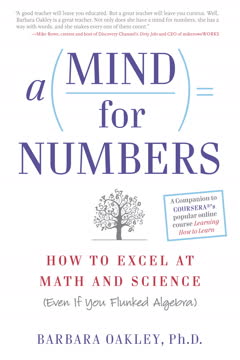
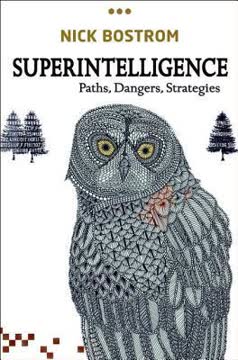


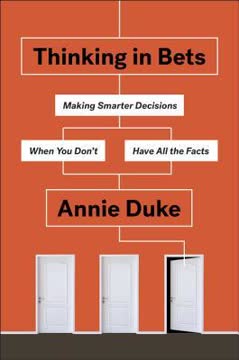
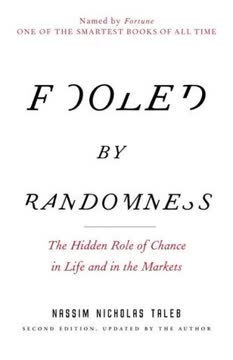

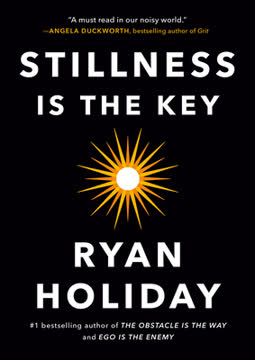

Download PDF
Download EPUB
.epub digital book format is ideal for reading ebooks on phones, tablets, and e-readers.




